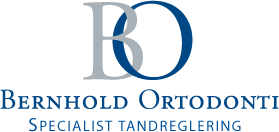FAQ
Orthodontics (from the Greek “ortho” = straight and “odontos” = tooth) describes the normal or abnormal growth and development of the facial skeleton and dentition. It also includes the cause behind the malocclusion, diagnosis, prevention, treatment, prognosis and significance to the individual.
There are certain types of malocclusions that are best treated during growth for optimal results. Other malocclusions can be treated successfully in patients of any age. Some malocclusions are not treatable with orthodontics alone but have to be surgically corrected.
We have many patients undergoing treatment, so there can be some waiting time. At the moment our waiting time is about 18 months. Some patients are prioritized due to increased risk factors and those patients get their first appointment within 3-4 months.
The first visit includes a thorough clinical examination (Guardians or parents are advised to accompany their children for the first visit).
The examination also includes x-rays, photographs and in some cases casts or scans of the teeth.
After the examination we create a treatment plan – usually fixed appliance in both jaws are required. We always discuss and explain the treatment plan with the patients (and parents/guardians). After this step we can start the treatment. Look under “treatment” for more information about the different types of appliances we offer.
An average treatment time is about 18 months. Mild malocclusions can sometimes be treated a little faster. More complicated cases can sometimes take more than 24 months to correct.
The appliance include brackets that are bonded to the teeth and then the archwire that is inserted in the brackets. The archwire becomes active and starts moving the teeth. It does not hurt to attache the appliance, but there can be some pain in the teeth and the gums/lips can become a little sore the first days after insertion. These discomforts fade/disappear with time.
Initially visits are scheduled every 8-10 weeks. After some time of active treatment visits are made a little bit more frequently, every 4-6 weeks.
Good oral hygiene is very important during treatment and teeth must be brushed very thoroughly as food/plaque easily get stuck in and adjacent to the appliance. Take your time and use the recommended toothbrushes. We also recommend using fluoride toothpaste and fluoride mouthwash. Poor oral hygiene can result in premature removal of the braces to prevent damage to the teeth (tooth decay and gingivitis).
Avoid hard, sticky and chewy candy. Also be careful with hard healthy things such as apples, pears, raw carrots and crackers. Foods like this need to be cut up to pieces before they are eaten.
Contact us if anything breaks! We can then decide if you need an emergency visit or if it can wait until your next scheduled visit.
To avoid relapse after active treatment all our patients get lingual retainers – thin wires bonded to the back of the frontal teeth. These are often combined with a removable retainer to be worn mainly at night, but sometimes even in daytime. We recommend that the fixed retainers stay on for several years after the active treatment.
Modern orthodontic appliances are very mild to the teeth, but sometimes there can be a slight apical root resorption, which is not harmful to the teeth. In rare cases, often closely related to a canine that have failed to erupt, the root resorption can be more serious. Poor oral hygiene can result in premature removal of the appliance to prevent damage to the teeth (tooth decay and gingivitis).
Most of our patients are children and adolescents under the age of 23 with a payment garantee (”betalningsgaranti”) from Region Skåne. The ”betalningsgaranti” is issued by ”Enheten för tandvårdsstyrning” after an assessment has been made by an orthodontist, if the malocclusion is assessed to meet the requirements for free care. Children and adolescents with milder malocclusions, who are not recieving a ”betalningsgaranti” are required to pay for their own treatment. These patients usually come through referral from their GP or contact us directly. Adults are often referred from their GP but in many cases they also contact us directly.
For other questions feel free to contact us.
